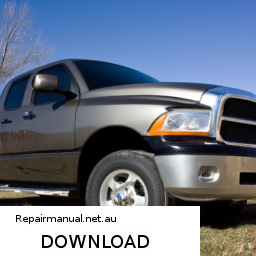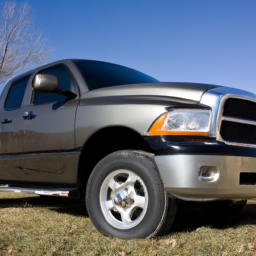
Cleaning the fuel system of a Dodge Ram can help improve fuel efficiency, restore engine performance, and reduce emissions. click here for more details on the download manual…..
- What RAM clutch disc should I choose? Selecting the proper clutch set and friction material will make all the difference in the driveability of your combination, and having …
- Dodge Ram Truck on Daytons & Vogues Tires #SpokesAndVogues
The fuel system consists of several components, and cleaning it may involve different methods depending on the specific issues you’re facing. Below is a detailed explanation of how to perform a fuel system cleaning, including descriptions of every component involved.
### components of the Fuel System
1. **Fuel Tank**: Stores the gasoline or diesel before it is sent to the engine.
2. **Fuel Pump**: A submersible electric pump that draws fuel from the tank and sends it through the fuel lines to the engine.
3. **Fuel Filter**: Removes impurities and debris from the fuel before it reaches the injectors.
4. **Fuel Injectors**: Spray fuel into the combustion chamber in a fine mist for optimal combustion.
5. **Fuel Lines**: Hoses or metal lines that carry fuel from the tank to the engine and back.
6. **Fuel Pressure Regulator**: Maintains the correct fuel pressure to the injectors.
7. **Intake Manifold**: Distributes the air-fuel mixture to the engine cylinders.
### Steps for Fuel System Cleaning
#### Tools and Materials Needed
– Fuel system cleaner (commercially available)
– Fuel line disconnect tool (if necessary)
– Wrench set
– Screwdrivers
– Safety goggles and gloves
– Shop towels
– Container for catching fuel (if disconnecting lines)
#### Step 1: Safety Preparations
1. **Work in a well-ventilated area**: Fuel vapors are hazardous.
2. **Wear safety goggles and gloves**: Protect yourself from fuel splashes.
3. **Disconnect the battery**: This prevents any electrical issues while working on the vehicle.
#### Step 2: Accessing the Fuel System
1. **Locate the fuel tank**: Usually found at the rear of the vehicle.
2. **Remove the fuel pump access panel**: If necessary, this can often be found under the rear seat or in the cargo area.
3. **Disconnect the fuel lines**: Use the fuel line disconnect tool to detach the lines on the fuel pump. Be prepared to catch any excess fuel in your container.
#### Step 3: Cleaning the Fuel Filter
1. **Locate the fuel filter**: It may be mounted along the frame rail or integrated into the fuel pump assembly.
2. **Remove the fuel filter**: Disconnect the inlet and outlet lines (be cautious of fuel spills).
3. **Inspect and clean or replace**: If the filter is clogged, replace it with a new one. If you are cleaning, rinse it with fuel and let it dry completely.
#### Step 4: Cleaning the Fuel Injectors
1. **Remove the fuel rail**: This may require disconnecting the electrical connectors and unscrewing bolts that hold the rail in place.
2. **Detach the injectors**: Carefully pull the injectors from the rail.
3. **Clean the injectors**: Use a fuel injector cleaning kit (available at auto parts stores) or soak them in a dedicated injector cleaner. Alternatively, you can use the cleaner while the injectors are still on the rail by connecting the cleaning kit directly.
4. **Reinstall the injectors**: Once cleaned, install them back into the rail.
#### Step 5: Cleaning the Fuel System
1. **Add fuel system cleaner**: Pour the recommended amount of fuel system cleaner into the fuel tank, following the product instructions.
2. **Run the engine**: Start the vehicle and let it run for about 10-15 minutes, allowing the cleaner to circulate through the fuel system. This will help clean the fuel lines, injectors, and combustion chamber.
and let it run for about 10-15 minutes, allowing the cleaner to circulate through the fuel system. This will help clean the fuel lines, injectors, and combustion chamber.
3. **Monitor for issues**: Listen for any unusual noises or warning lights while the cleaner runs through the system.
#### Step 6: Reassemble and Test
1. **Reassemble the fuel system**: Reattach any fuel lines and the fuel rail, ensuring that all connectors are secure.
2. **Reconnect the battery**: Ensure everything is back in place before powering the vehicle.
3. **Start the engine**: Check for leaks at the fuel lines and listen for normal engine operation.
4. **Take a test drive**: Drive the vehicle to ensure that it operates smoothly.
### Final Tips
– **Frequency**: It’s generally advisable to clean the fuel system every 30,000 to 50,000 miles, or as needed based on performance issues.
– **Professional Cleaning**: If you’re uncomfortable performing this maintenance, consider taking your Dodge Ram to a professional service center for a thorough fuel system cleaning.
By following these steps, you can effectively clean the fuel system of your Dodge Ram, potentially improving its performance and longevity. Always consult the vehicle’s service manual for specific instructions and safety precautions related to your model.
The timing cover is a crucial component of an internal combustion engine, serving as a protective enclosure for the timing system, which includes the timing belt or chain, gears, and related components. Positioned at the front of the engine, the timing cover is typically made from durable materials such as aluminum or plastic, designed to withstand the harsh conditions within the engine compartment. Its primary purpose is to shield the timing components from dirt, debris, and moisture, which could lead to premature wear or failure.
The timing cover also plays a vital role in maintaining the proper alignment and tension of the timing belt or chain, ensuring that the engine’s camshaft and crankshaft operate in synchronization. This synchronization is critical because it controls the timing of the engine’s intake and exhaust valves, directly impacting the engine’s performance, efficiency, and emissions.
In addition to its protective and structural functions, the timing cover often incorporates oil seals to prevent engine oil from leaking out. Some designs may also feature provisions for mounting accessories like oil pumps and sensors, contributing to the overall functionality of the engine. Given its importance, any damage to the timing cover can lead to significant engine problems, making it essential for vehicle maintenance to include regular inspections of this component to ensure its integrity and proper operation.